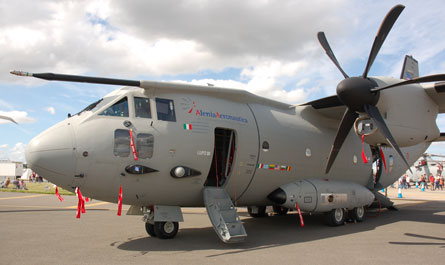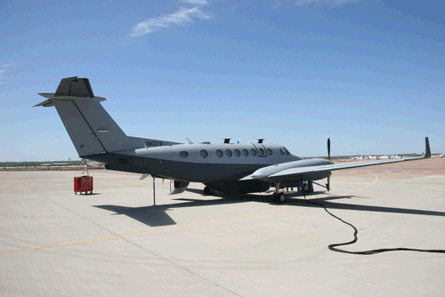The US Army and Air Force may exchange control of two manned turboprop aircraft programmes as the Pentagon re-clarifies the airborne roles and missions for each service.
The Fiscal 2010 budget request released today shifts budget authority for the L-3 Communications/Alenia C-27J Spartan from the army to the USAF and slashes the procurement by more than 50%.
At the same time, the USAF has transferred budget authority to the army to buy the last six of 37 MC-12 Liberty surveillance aircraft, according to budget documents.
If approved by Congress, the transfer of the C-27J fleet [shown below] would shift control of the fixed-wing airlift mission to the USAF, which already operates a fleet of Lockheed Martin C-130J turboprop airlifters.
 |
|---|
FlightGlobal.com |
Meanwhile, the army would assume with the MC-12 fleet the central role for the low-altitude surveillance mission by manned aircraft.
It was not immediately clear if there was a direct link between the possible transfer of the two programmes, or if it was coincidental. But the numbers of aircraft involved are intriguingly close.
The budget for the C-27J programme would be reduced from 78 aircraft for both the USAF and army to 38 for the USAF alone. The army could inherit a fleet of 31 MC-12's already acquired since last year by the USAF, plus buy six more.
Two days before the budget release, a senior army official signaled that control of the MC-12 fleet was in discussion between the two services.
"We're working in concert with the air force on the whole aspect of Project Liberty right now," Brig Gen Walter Davis said at the 2009 Quad-A convention.
"There is I guess it's fair to say a fair bit of tension between working -- the 37 aircraft I believe it is -- working on roles and missions where that mission lies and where that capability is best suited to be used," Davis added. "And by which service quite frankly."
 |
|---|
©US Air Force |
The USAF launched the MC-12 [shown above] programme in May 2008 in the wake of public criticism by Secretary of Defense Robert Gates, who complained that service officials were not moving fast enough to deploy surveillance aircraft to Iraq and Afghanistan.
Although the army could pick up the MC-12 mission, the potential loss of the C-27J programme is painful for service leaders.
"It's on track right now as far as testing," Col Brian Diaz, the army's capabilities manager for lift, told reporters at the Quad-A convention on 6 May. "The [defence acquisition executive] already validated 75 aircraft for the army, and that's what we're looking at getting hopefully in the future, and that is to perform time sensitive critical missions as well as direct support missions."
Source: Flight International























